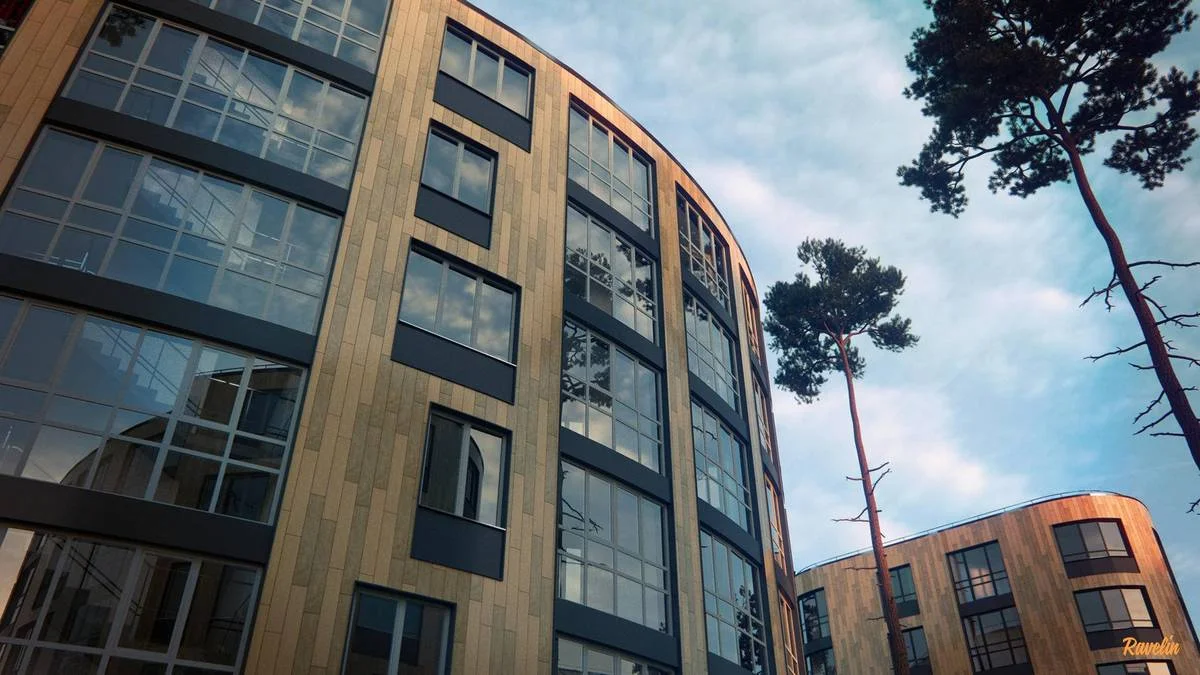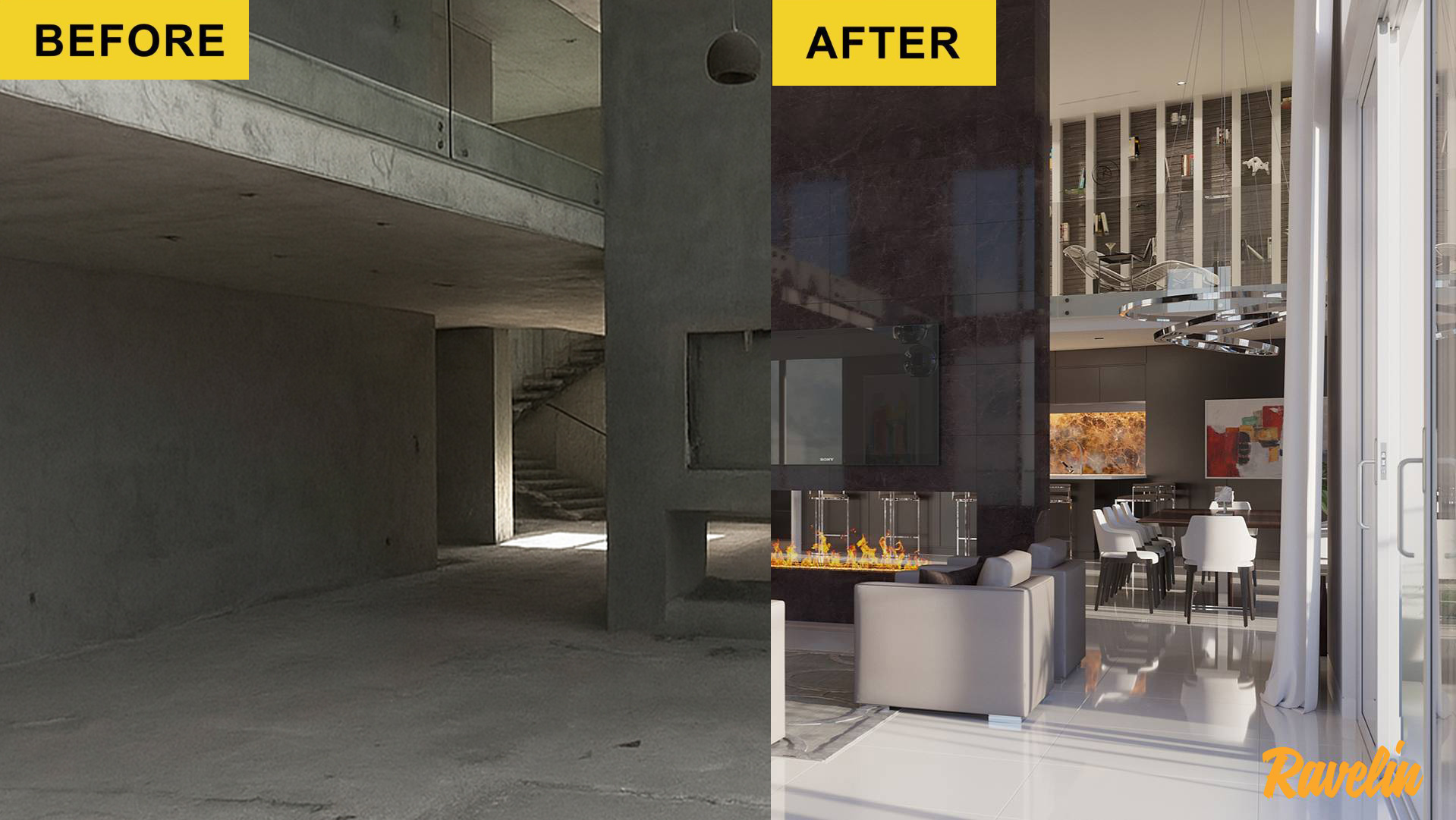How Marketing Agencies Benefit from Outsourcing Architectural CGI
Imagine trying to sell a penthouse with just a floor plan and a prayer. Sounds risky, right? In today’s scroll-happy, image-driven world, real estate marketing firms need more than blueprints — they need bold, beautiful visuals that make people stop, stare, and say, “I want to live there.”
That’s where outsourced architectural CGI steps in — not as a backup plan, but as a game-changing advantage. Below, we explore the 7 key reasons why marketing agencies around the globe are partnering with CGI studios to supercharge their real estate campaigns.
What Is Architectural CGI and Why It Matters for Marketing
Architectural CGI — short for computer-generated imagery — is like giving your project a beating digital heart before a single brick is laid. It transforms technical drawings into vivid, realistic visuals that breathe life into architecture. Think of it as storytelling through pixels: a way to seduce buyers, impress investors, and ignite curiosity with a single glance.
For marketing agencies, this isn’t just a tool — it’s a superpower. Whether you're selling luxury condos or commercial towers, CGI helps you tell a visual story that static photos or floor plans simply can’t. It shows not only what a building is, but what it feels like to live in.

Key Advantages of Outsourcing CGI for Marketing Agencies
Let’s dive into the core of it — why does outsourcing architectural CGI make so much sense for marketing firms?
Cost Efficiency and Budget Optimization
Hiring an in-house CGI artist is like hiring a Michelin chef to make your morning coffee — overkill for most agencies. Outsourcing lets you tap into world-class talent without the overhead of salaries, benefits, or costly software.
It’s a pay-per-project model, which means you spend less on staffing and more on strategy. Plus, top-tier CGI studios already have the infrastructure — hardware, libraries, render farms — all built in.
Scalability for Projects of Any Size
One week, you're marketing a cozy duplex. The next, a 200-unit skyscraper. Your internal team can’t stretch like that — but an external CGI studio can. Outsourcing gives you elastic production capacity: scale up when projects flood in, scale down when it’s quiet. No stress. No hiring sprints. No burnout.
It's like having a turbo button you can press anytime — without blowing up your budget.
Access to Top-Tier Visualization Talent
You’re not just hiring freelancers — you’re partnering with specialists who live and breathe architectural CGI. These artists obsess over shadow fall-off, texture realism, and lens choices the way a sommelier talks about tannins.
Most agencies can’t afford this kind of niche brilliance in-house. With outsourcing, you don’t have to. You get senior-level skillsets on tap — whenever you need them.
Faster Turnaround Times with No Quality Compromise
Need visuals yesterday? We’ve all been there. Deadlines in real estate marketing aren’t suggestions — they’re launch dates, pitch decks, and investor presentations that can’t slip.
CGI studios are built for speed. They have optimized workflows, collaborative teams, and dedicated project managers. You’re not waiting on one overwhelmed artist — you’re plugging into a machine that delivers fast without cutting corners.
Focus on Core Marketing Activities
Let’s be honest — you didn’t start a marketing agency to manage rendering pipelines. Your genius is in strategy, branding, and storytelling. Outsourcing CGI means you can stay in your creative zone while someone else handles the lighting setups and V-Ray passes.
You brief once, review twice, and present visuals that make your clients say, “Wow.” That’s the power of staying in your lane — and letting CGI experts stay in theirs.

Types of Architectural CGI Services Useful for Marketing
Not all CGI is created equal — and that’s a good thing. Depending on your campaign goals, there’s a buffet of visualization options that can be tailored to your story.
Exterior and Interior 3D Renderings
The bread and butter. From a glowing nighttime facade to a sun-drenched living room, these still images capture architectural intent in its most emotional form. Want to sell a vibe? Start here.
3D Animations and Walkthroughs
Sometimes, static isn’t enough. 3D animations allow prospects to virtually glide through a property, seeing every corner and curve. It's like a movie trailer for your building — with the same emotional pull.
Virtual Tours and Interactive Presentations
Modern buyers want control. Virtual tours let them explore the property on their own terms — zoom, rotate, click, repeat. Perfect for websites, showrooms, or high-converting landing pages.
360° Panoramas and Immersive Content
Drop the viewer inside the space. 360° CGI experiences are ideal for showcasing entire rooms or outdoor layouts. Great for mobile and VR — even better for remote clients.
Photomontages and Contextual Visualizations
Renderings in real-life settings. Blend the CGI building into an actual photo of the surroundings — whether it’s a Manhattan skyline or a quiet lakeside view. It’s not just about the architecture; it’s about the place.

How Marketing Agencies Use CGI in Campaigns
CGI isn’t just eye candy — it’s a sales tool with sharp teeth. Here’s how top marketing firms turn visuals into value.
Real Estate Advertising and Pre-Sales
Want to sell before construction starts? You’ll need more than a brochure. With CGI, agencies create hyper-realistic imagery that lets buyers fall in love before the first nail is hammered.
A well-lit living room with morning sunlight pouring through sheer curtains? That’s not just a rendering — that’s an emotional decision trigger.
Social Media and Digital Promotion
Instagram doesn’t wait. High-quality 3D visuals stop the scroll and spark engagement. Rendered content performs incredibly well in paid ads and organic reach — because it’s polished, aspirational, and clickable.
Presentation Materials for Developers
Developers aren’t buying feelings — they’re buying results. CGI lets you walk into a pitch with bold, cinematic visuals that show your strategy, not just tell it.
Slides with heatmaps? Good. Slides with an aerial CGI view of the full complex, bathed in sunset light? Better.
Pitch Decks and Investor Portfolios
When millions are on the line, impressions matter. CGI makes investment decks more persuasive by grounding abstract financials in visual reality. It’s the difference between “what if” and “look at this.”

Choosing the Right CGI Partner
Not all CGI studios are created equal — and choosing the wrong one can feel like hiring a wedding photographer who only shoots cats. Here's how marketing agencies separate the pros from the pretenders.
Portfolio and Visual Quality Standards
First, look at the work. Not just the lighting and materials, but the emotion. Does the image make you feel something? If the portfolio looks like a video game lobby, keep scrolling. If it feels like a page from Architectural Digest, you’re on the right track.
Workflow Transparency and Communication
You don’t want to chase updates like a detective. A good CGI partner shares timelines, sends previews, and answers within a few hours — not days. Bonus points for those who speak your language (both literally and creatively).
Flexibility with Deadlines and Revisions
Real estate moves fast. Your CGI team should, too. Need a last-minute camera change? A different lighting mood for the same scene? If the answer is always “no” or “maybe next week,” that’s a red flag.
Industry Experience and Specialization
There’s a difference between someone who can technically render a building and someone who understands the psychology of selling one. Choose a team that knows the rhythms of real estate marketing — not just 3ds Max.

The CGI Outsourcing Workflow: Step by Step
Working with a CGI studio should feel less like a guessing game and more like a well-rehearsed dance. Here’s how most successful collaborations unfold:
Initial Briefing and Gathering References
This is where your vision gets translated into pixels. You share the floor plans, mood boards, reference photos, and brand guidelines. The more specific, the better — it’s like setting the GPS before the trip begins.
Model Creation and Material Selection
Next, the CGI team builds a detailed 3D model based on your drawings. Textures come to life — think velvet couches, brushed steel fixtures, terrazzo flooring. You’ll see the project begin to take shape before your eyes.
Lighting, Camera Angles, and Draft Review
Now the magic begins. Lighting sets the mood: early morning glow, golden hour warmth, or dramatic evening tones. Camera angles are chosen for maximum emotional impact — no awkward views here. You get draft renders and share feedback.
Final Rendering and Delivery
Once revisions are done, it’s time for high-res, polished imagery. The result? A folder full of visuals that look more like art than architecture — ready to go live on ads, brochures, websites, and beyond.

Common Challenges and How to Overcome Them
Outsourcing isn’t all roses and render layers. There are bumps in the road — but with the right partner and process, they’re easy to smooth out.
Time Zone and Communication Barriers
Working with teams across the globe? It can feel like playing email ping-pong in the dark. The fix: find a studio that overlaps with at least part of your workday and uses clear project management tools like Trello or Notion. Communication should be clockwork, not chaos.
Aligning Creative Vision with the CGI Team
You say “modern Scandinavian,” they send you Miami nightclub. Misalignment happens when briefs are vague. The antidote? Clear references, detailed annotations, and (when in doubt) hop on a quick Zoom to walk through it. Show, don’t just tell.
Ensuring Brand Consistency Across Projects
Every developer you work with has a voice, a style, a signature. If your visuals don’t match that, the whole campaign feels off. A good CGI partner will build visual templates and color pipelines tailored to each client — so every image stays on-brand and on-message.

Case Studies: Successful CGI Collaborations with Agencies
Want proof that this works? Let’s peek behind the curtain at how marketing agencies have used outsourced CGI to elevate their real estate campaigns — and close deals faster.
Luxury Real Estate Marketing Campaign
A boutique agency in Los Angeles needed visuals for a high-end hillside villa still in early planning. Within two weeks, their CGI partner delivered golden-hour renders that made the infinity pool look like it belonged in a Bond film. The result? All units sold before the groundbreaking — using only visuals and vision.
Urban Development Project Launch
A large-scale agency in Toronto partnered with a CGI studio to roll out a full media campaign for a new downtown district. Aerial renders, photomontages, and interactive 360° views helped them win over both the city council and hesitant investors — long before the first crane went up.
International Property Investment Brochures
An agency targeting overseas buyers needed imagery that could sell homes remotely. The solution? CGI scenes with emotionally charged lighting, interior stylings tailored to each cultural market, and full translations. The campaign reached buyers in Singapore, Dubai, and London — with measurable ROI.

Conclusion: Why Outsourcing CGI Is a Strategic Move for Agencies
In real estate marketing, you're not just selling square footage — you're selling stories, aspirations, lifestyles. And great storytelling demands great visuals.
Outsourcing architectural CGI isn’t a shortcut — it’s a strategic decision that lets your agency stay agile, creative, and competitive. You gain access to elite talent, expand your capabilities overnight, and wow your clients with visuals that feel more real than reality.
Whether you’re launching a skyscraper in Manhattan or a lakeside retreat in Montana, the right CGI partner can help you turn “coming soon” into “sold out.”
Need that kind of magic in your toolbox? You know where to find us.




